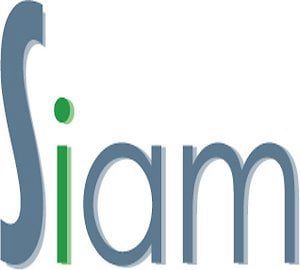EU implements groundbreaking legislation against microplastics!

Image: Flickr
EU implements groundbreaking legislation against microplastics! – The gradual implementation of the regulation will allow companies and industries to gradually adapt to the new requirements.
To reduce plastic pollution, the European Union (EU) has adopted new legislation to regulate synthetic polymer microparticles – commonly known as microplastics – with Commission Regulation (EU) 2023/2055. These progressive regulations, which come into force on October 17, 2023, fall under Annex XVII of REACH (Registration, Evaluation, Authorization and Restriction of Chemicals) and mark an important milestone in the fight against plastic pollution.
Understanding microplastics
Microplastics are small plastic particles that end up in the environment. These are solid plastic particles made of polymers and functional additives that are found in a variety of products, including cosmetics, cleaning products, artificial sports surfaces, medical devices, paints and toys. To be classified as microparticles of synthetic polymers under this Regulation, they must meet certain criteria:
- They must account for at least 1% of the particle content.
- They must be less than 5 mm or less than 15 mm long for all dimensions, with a length-to-diameter ratio greater than 3.
Exemptions and restrictions
The EU regulation provides for several key exemptions and restrictions to effectively address the problem:
- Certain microplastics that are permanently incorporated into solid matrices, used industrially or retained by technical means and do not enter the environment are exempt from the regulation.
- Pharmaceuticals, veterinary medicinal products, in vitro diagnostics and food additives are also exempt from the regulation.
- Suppliers of microplastics for industrial use must provide specific information on their use and disposal from October 17, 2025
- From October 17, 2025, for certain products and from October 17, 2025, for products that permanently incorporate microplastics into solid matrices or are enclosed by technical means, is required to provide instructions to professional users and the public on how to prevent microplastics from becoming airborne and ending up in the environment. 2026, for in vitro diagnostic medical devices.
- Manufacturers of lip, nail and make-up products containing microplastics must label their products with “This product contains microplastics” from October 17, 2031 to October 16, 2035. Products that were already on the market before October 17, 2031 have until December 17, 2031 to carry this label.
- Manufacturers, importers and industrial users of microplastics in the form of pellets, flakes and powders must submit information to the European Chemicals Agency (ECHA) annually from 2026. From 2027, other manufacturers and industrial users using microplastics at industrial sites must also do so.
- Suppliers must provide information to ECHA when they make microplastics permanently incorporated into solid matrices available to professional users and the general public for the first time from May 31, 2027 and annually thereafter
- Manufacturers, importers and industrial users of products containing polymers that are exempt from labeling as microplastics due to their degradability or solubility must demonstrate this in accordance with specific rules.
Impact of the regulation
This comprehensive regulation represents an important step forward in the EU’s ongoing efforts to tackle plastic pollution and its harmful effects on the environment. By introducing restrictions on the use of microplastics and providing guidelines for their responsible use and disposal, the EU aims to reduce the environmental impact of these harmful particles.
Gradual implementation
The gradual implementation of the regulation will allow companies and industries to gradually adapt to the new requirements. This transition period will allow stakeholders to find sustainable alternatives to non-biodegradable microplastics, which will ultimately contribute to a cleaner and healthier environment.
Question and answer document
The European Commission is also working on a Q&A document to help with the practical implementation of these rules, which is expected to be published by the end of 2023. This document will provide further clarity and guidance on the application of the restriction on microplastics.
Also read: Increase in imports of hazardous substances into the EU!
Reservation
This information has been compiled with the greatest possible care, in some cases from different information sources. (Interpretation) errors are not excluded. No legal obligation can therefore be derived from this text. Everyone dealing with this subject has the responsibility to delve into the matter!
